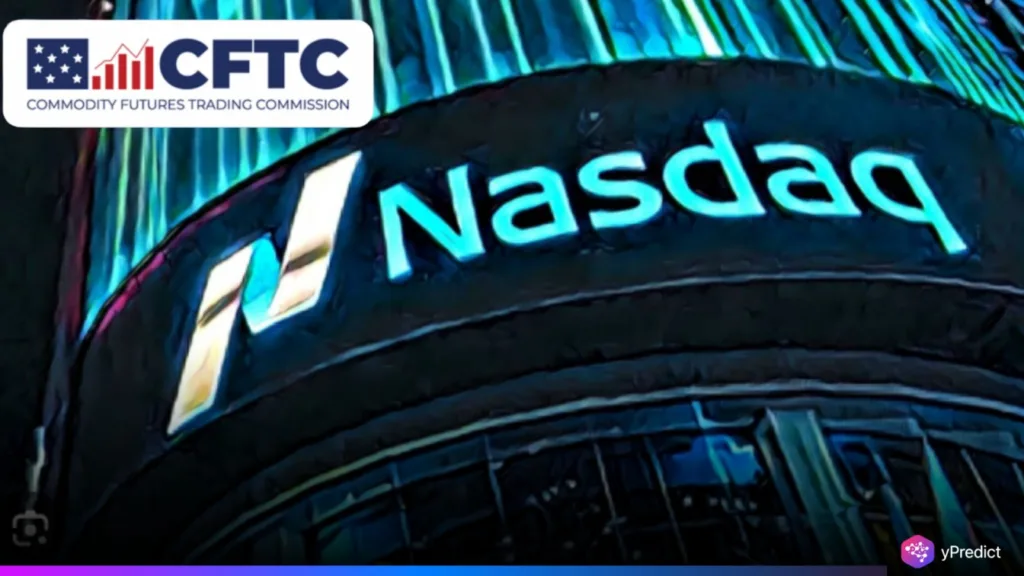
The Commodity Futures Trading Commission (CFTC) has now made a significant upgrade to its systems by implementing the technology for surveillance outlined by Nasdaq, an important move to meet the expectations of the current speed of the crypto trading environment. Digital assets have seen an explosive growth spurt with daily trading activity now reportedly exceeding $586.59 billion (CoinCodex, 2025). The CFTC felt strong pressure to use current technology and replace its antiquated surveillance tools and systems from the 1990s, based on a real need for AI that can detect manipulation of the markets in real time.
Aligning With White House Push on Digital Assets
The adoption of this technology corresponds with the report on digital assets recently issued by the White House, which noted a proposed coordinated “crypto sprint” initiative to combat risk and the rapid growth of the sector. Regulators have been facing tremendous pressure to modernize oversight as crypto trading has become complicated and involves an international audience. By adopting Nasdaq Surveillance, the CFTC indicates that it is ready to match the industry’s pace with similarly advanced regulation.
The White House has consistently flagged unregulated trading as a risk to both investors and the broader financial system. The decision by the CFTC reflects that warning, translating policy recommendations into technological action. The adoption also mirrors global trends, where Nasdaq Surveillance has become a trusted backbone for more than 50 exchanges worldwide.
Tackling Market Manipulation With AI-Powered Systems
Market manipulation is a long-standing issue in crypto trading because unregulated exchanges and dispersed liquidity have always allowed bad actors to take advantage of latencies. Research published recently in the Journal of Financial Regulation (2023) demonstrated that advanced analytics can help reduce market abuse by roughly 30%, and advocates the case for regulators to use more updated tools.
The CFTC’s adoption of surveillance using Nasdaq Surveillance represents a shift to AI-enabled regulation. The Nasdaq Surveillance system can monitor on their own, and subsequently flag suspicious trading behavior with instantaneous alerting to help regulators visualize activities in real-time that tools of the last generation couldn’t possibly process that quickly. At a pace in which billions of dollars move per second, the ability to detect suspicious trading activity and respond, just by having advanced analytics, as a disincentive and convert people back to using a trusted exchange, is potentially significant.
Rising Complexity of Global Crypto Markets
With cryptocurrency trading evolving from plain spot trading to derivatives, perpetual swaps, and algorithmic trading, regulators must develop more sophisticated oversight. Traditional risk tracking and monitoring systems in established markets, like equities, which are on much slower timeframes, normally can’t function well in a crypto marketplace that is always on. Regulators have thus far been largely reactive to risk and issues, addressing risk and issues ex post facto.
By leveraging Nasdaq Surveillance, the CFTC has a system that uses artificial intelligence to not only surveil but also to predict behavioral and trading anomalies. Rather than waiting for a flag to rise, the system uses advanced big data science and actuarial analysis to measure and monitor how behaviors deviate from expected patterns. This is quite possibly a paradigm shift in global regulator regulation and oversight as it places the CFTC at the forefront of adopting and using new technology for regulatory transformation.
A Global Trend Toward Smarter Regulation
The fact that the CFTC has adopted Nasdaq Surveillance is not an isolated incident, but comes at a time when a movement is now taking place across the regulators of the world. More than 50 exchanges across the globe are already using this system based on its fit with the unique aspects of digital asset trading. For the United States, it provides us with an opportunity to ensure that our regulatory agencies are adhering to internationally recognized best practices, while investor confidence is impacted by how transparent and fair the marketplace is.
This global alignment is a reminder that the world is rapidly moving past a time when crypto trading can be monitored and enforced against using antiquated systems. AI-driven systems are not only becoming the norm to combat abuse, but also towards a general framework that enhances our ability to respond to innovation.
Conclusion
The CFTC’s action to add Nasdaq Surveillance technology is a watershed event in U.S. regulation of crypto trading. It updates the regulator’s antiquated infrastructure, provides real-time surveillance, and directly addresses the risks that regulators and academics have highlighted. Now that daily trading volumes around the world are exceeding half a trillion dollars, the need for fast, AI-driven discovery of manipulation could hardly be more timely.
This also represents a larger convergence of U.S. regulatory priorities and practices with those internationally, maintaining fidelity and future-readiness in America’s watchdog functions. The CFTC has presented the beginnings of a framework for supporting smarter, faster, and more effective market surveillance as crypto continues to grow and trading sequences become increasingly esoteric via Nasdaq Surveillance.






